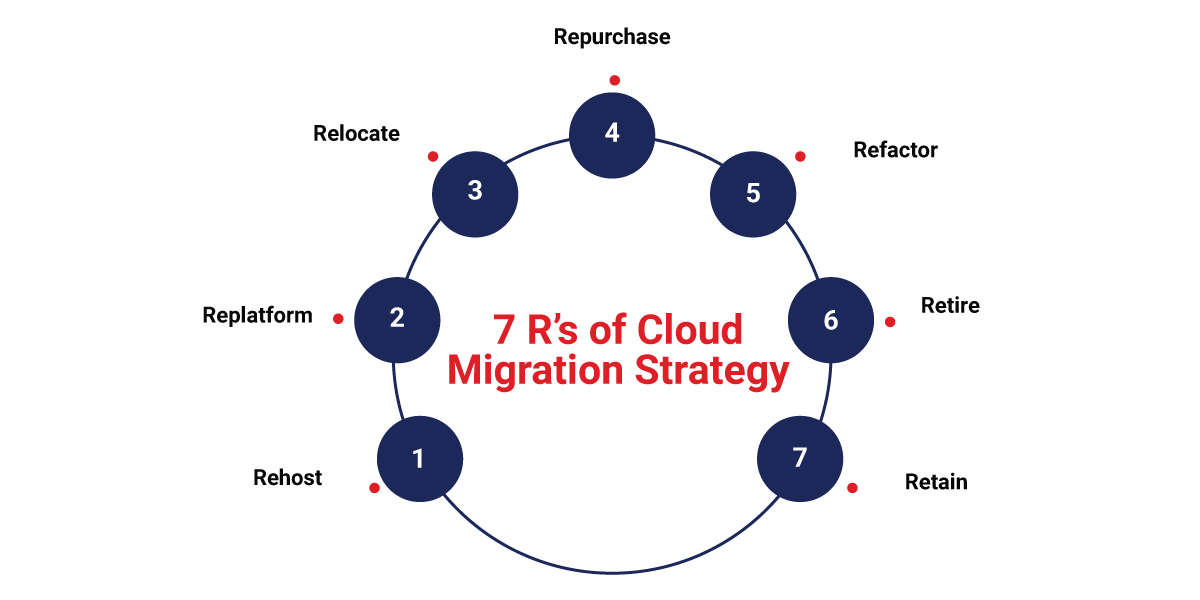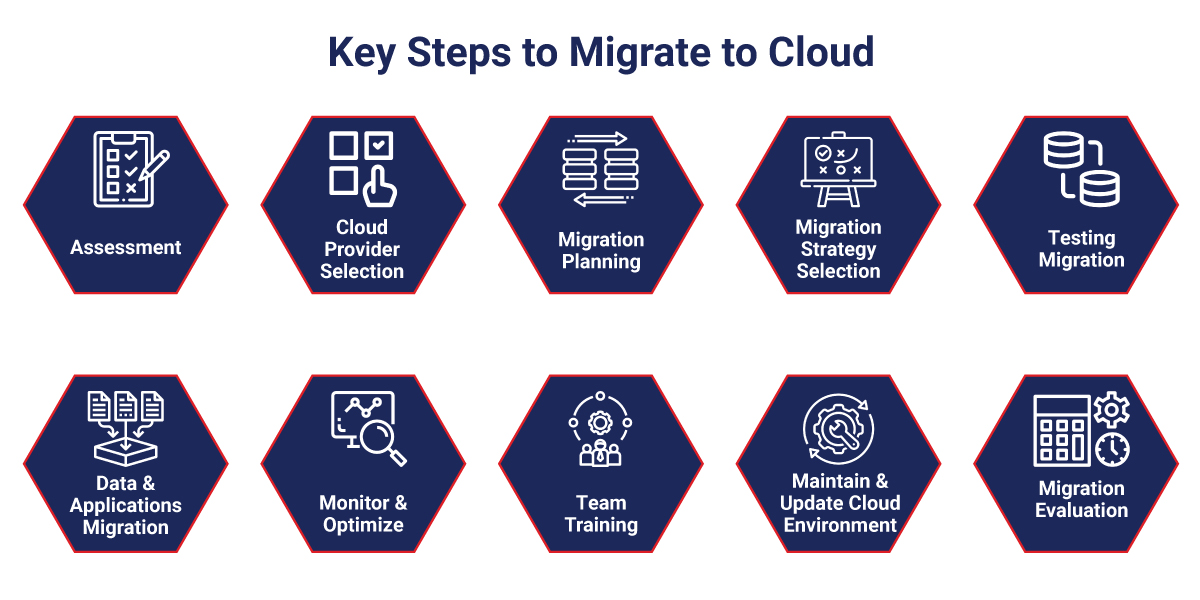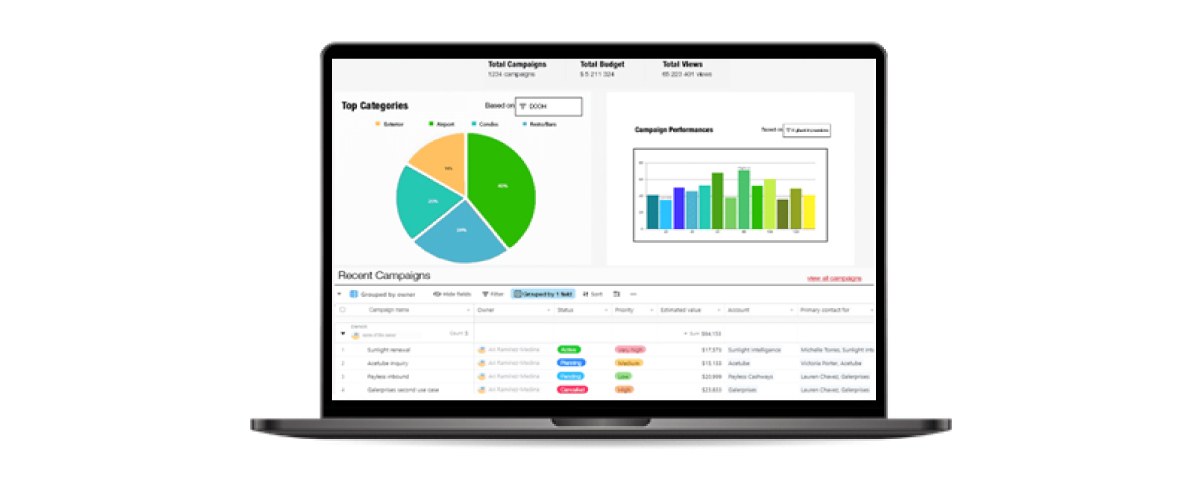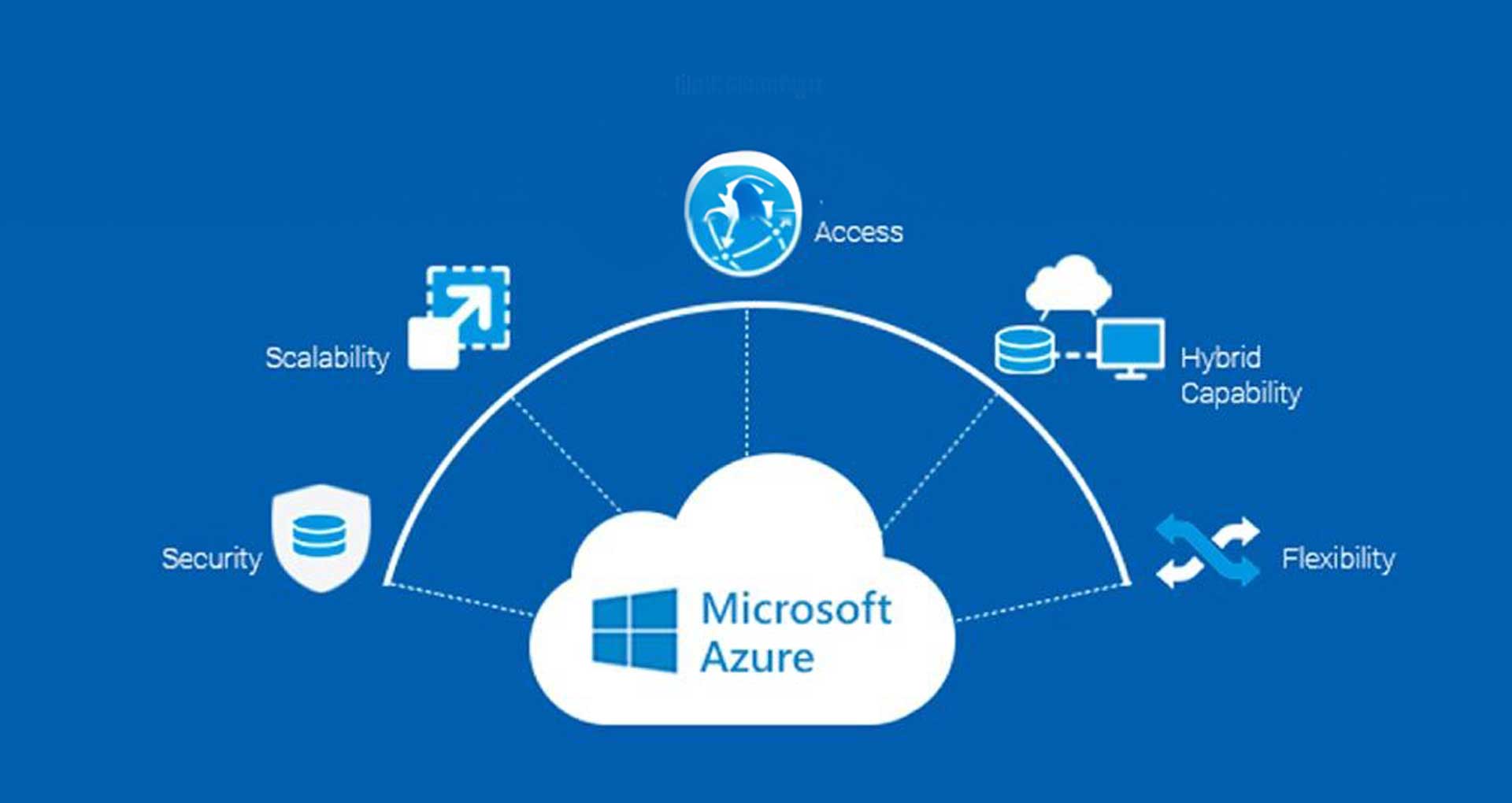Businesses worldwide are replacing legacy, on-premise technology with scalable, flexible & cost-effective cloud computing power. From reducing IT costs to enhancing agility & accelerating innovation, cloud migration is becoming a pressing requirement. A cloud migration strategy helps an organization move its data and applications from on-premises architecture to the cloud or across cloud environments. However, making the transition requires professional help with practical strategy & technical specialization.
Through this blog, we’ll help you better understand the 7Rs of a cloud migration strategy, key steps to migrate to the cloud, best practices, benefits, and common challenges, as well as solutions to achieve a seamless transition for your investments. So, let’s get started!
What is Cloud Migration Strategy?
It refers to the process of moving an organization’s digital assets, including IT resources, data, workloads, or applications, partially or wholly, to the cloud. It involves assessment, choosing the right cloud model, migrating data and applications, and continuous monitoring. The strategy aims to achieve benefits like agility, scalability, and cost-effectiveness offered by cloud computing. And this process impacts all aspects of the organization, including people, processes & technology.
7 R’s of Cloud Migration Strategy
Every organization’s cloud migration journey is unique, shaped by its specific goals, industry requirements, and legacy systems. Moreover, not all applications are equal. Different cloud migration strategies, thus, allow organizations to tailor their cloud migration journey to fit their unique needs. Let’s explore the 7 Rs of cloud migration strategy to help you understand which one may be appropriate for different workloads and business requirements.

Rehost
Rehosting is commonly referred to as the “lift and shift cloud migration strategy. It transfers data assets from on-premises to cloud infrastructure. Further, it can be automated using tools like CloudEndure Migration and AWS VM Import/Export, but it also works with manual implementation to gain maturity.
When to consider
- For large-scale migrations
- If you are new to the cloud
- When you need to migrate off-the-shelf applications within a specified deadline
AdvancedMD, a medical professional software platform, handles highly sensitive, protected patient data. It was being spun off from its parent company, ADP, and had to move all its data out of ADP’s data center. They migrated from on-premises to Cloud with Cloud Volumes ONTAP.
Replatform
Replatform, also called the “Lift, Tinker, and Shift” strategy, helps make configurational changes to the applications that better suit the cloud environment without changing their core architecture. The development teams apply this approach to change how apps interact with the database to run effectively on managed platforms like Amazon RDS.
When to consider
- Time-crunch migration scenario
- When you want to leverage cloud benefits without app refactoring
- When you want to migrate an on-premise application with a complex structure with just minor tweaks
Evernote, a notetaking and task management application, leveraged a re-platform strategy when it needed an infrastructure solution to scale for user traffic with speed, reliability & disaster recovery. They used a phased approach & migrated 5 billion notes & attachments from a private cloud to a Google Cloud Platform in 70 days.
Relocate
This strategy involves migrating the virtual machines (VMs) directly to the cloud infrastructure with minimal changes. It’s essentially a “lift-and-shift” approach at the hypervisor level, which means the entire VM environment is moved without modifying the underlying operating system or applications. It is recommended for businesses looking to move to the cloud without disruptions or downtime.
When to consider
- Migrating VMs that are already well-optimized for cloud environments
- When you want to minimize downtime during the migration process.
- Maintaining existing configurations and settings for a smoother transition
Dropbox is a popular file storage and sharing platform. As their user base grew, they needed to scale their infrastructure efficiently. To achieve this, they adopted a relocation strategy. They utilized tools like AWS VM Import/Export to migrate their on-premises VMware VMs using Hadoop Distributed File System (HDFS) infrastructure to the Amazon Web Services (AWS) cloud platform. This approach allowed Dropbox to leverage the scalability and elasticity of AWS without significant changes to its existing VM environment. This minimized downtime and disruption to their service while enabling them to handle increased user traffic effectively.
Repurchase
Popular as a drop-and-shop strategy, it replaces the existing on-premise application with cloud-native vendor-packaged software. It can be referred to as moving to SaaS (Software as a Service) application with the same capabilities. It entails making licensing changes – you can start a new license agreement with the cloud provider for their solution and discard the existing on-premises license. For instance, it is moving from the in-house CRM system to Salesforce or Hubspot. The newer, upgraded version would offer a better value coupled with higher efficiency, savings (on app storage) & even maintenance costs.
When to consider
- Replacing software for regular business functions like finance, accounting, CRM, ERP & more
- The existing legacy app is not compatible with the cloud
Airbnb, a community marketplace for property owners and travelers worldwide, utilizes the company’s website & iOS & Android mobile apps for users’ activities. Due to service administration issues, they migrated cloud computing functions from their original provider to AWS. It helped them save the expense of at least one operation and provided more flexibility and simplicity.
Refactor
Rearchitect or refactor strategy involves rewriting the applications from scratch to make them compatible with the cloud environment. It is usually for the apps that demand thorough modernization, including features, scalability, and performance, and cannot be achieved through minor changes to the existing architecture. It allows you to leverage the full potential of cloud-native technologies such as serverless, microservices architecture, function-as-a-service, containers, and load balancers. This approach is most expensive, resource-intensive, and time-consuming compared to the others on the list, yet it would prove the worthiest in the long run.
When to consider
- Strong business drive to add scalability, speed, performance
- Non-compatibility with an on-premise app
State Auto, a property and casualty insurer in the US, used a traditional three-tier architecture & experienced slow production on existing systems. They built a cloud-native application on AWS and cut production time to a day. AWS helped them improve the user experience & foster a culture of innovation.
Retire
It can be considered a passive strategy as there’s no natural movement. With this approach, you get rid of applications that are:
- No longer needed
- Are not productive for the organization’s IT portfolio.
For instance, if an application is considered not worthy of migration, it can either be eliminated or downsized. It further allows assessing all the applications in terms of their uses, dependencies and cost to the company.
When to consider
- Archive applications that contain valuable data
- Withdraw applications with duplicate capabilities to save costs
- Discontinue apps where functionality can be added to one another through microservices.
Autodesk, an American multinational software corporation, collaborated with AWS to migrate workloads from on-premise data centers to AWS. They retired 209 application environments to improve security& UX. Migration and modernization helped achieve reduced costs & increased efficiency.
Retain
This strategy focuses on revisiting critical applications or sections of your digital assets that need significant refactoring before the migration. Some applications aren’t ready for cloud shifting due to technical, compliance, security, or cost-effective reasons. So, enterprises might implement a hybrid or part migration strategy to retain the assets.
When to consider
- Adopting a hybrid cloud model
- On-premise applications are of great importance
- The legacy app is not compatible with the cloud, while it works well on-premise
Johnson and Johnson deployed a hybrid cloud strategy by running critical workloads on AWS & some legacy applications on their data centers. It helped them automate IT, reduce the footprint of physical servers & gain business efficiency.
Cloud Migration Process: Key Steps to Migrate to Cloud
To begin with, the process of migration to the enterprise cloud involves implementation, also known as cloud transformation. Migrating your workloads and data to the cloud in a transparent and holistic process. Let us walk you through each one.

- Assessment: Our cloud computing consulting experts will examine your existing setup to determine which applications and workloads can easily be moved to the cloud and which are more demanding due to regulations, performance, or other reasons.
- Choose the Right Cloud Services Provider: The next step is to choose a service provider that fulfills business goals while considering security, compliance, cost, and scalability criteria at the same time.
- Planning for Migration: Our experts develop a migration plan that suggests what needs to be done based on the timeline, potential risks, and issues that may be encountered during the transition. This plan also includes timelines, dependencies, and risks associated with it.
- Choose Migration Strategy and Refactor as Needed: We can help you choose an approach that best matches your business requirements, whether it is lift and shift or legacy app migration. For cloud-native benefits like refactoring your application to optimize its performance on the cloud, we can help you choose the best approach.
- Test The Migration: Before moving to your production environment, our team tests the migration in a non-production environment to validate data integrity and identify any issues or bottlenecks in the new cloud environment.
- Migrate The Data and Applications: Once the testing is complete, the next step involves moving your data and applications to the cloud using the migration plan and strategy.
- Monitor and Optimize: After the migration is complete, we shall monitor the applications’ performance and look for ways to enhance the performance and efficiency of their cloud environment. This will help ensure that the cloud environment is operating efficiently.
- Train The Team: To get the most out of your cloud infrastructure, our cloud experts can work with you to provide proper guidance and training to your employees to fill the gap. We ensure they understand the cloud environment’s ins and outs, including new tools and processes.
- Maintain and Update the Cloud Environment: Our team focuses on establishing processes for regular maintenance, updates, and security patches to keep your cloud environment secure, reliable, and up-to-date.
- Evaluate The Migration: In this final step, the organization should optimize the cloud operations and determine whether they met the desired outcomes.
Key Benefits of Cloud Migration
Let’s explore the benefits of cloud migration and see why moving to the cloud is a big win for companies in all kinds of industries.
- Increased Flexibility & Agility: Both large and small companies get access to the cloud’s scalable tools and services. So, even small firms get the agility to respond to a new need, challenge, or opportunity. The cloud’s inherent strengths support innovation and reduce time to market for new applications, products, or services, thereby transforming IT from a fixed cost into a flexible asset.
- Greater Security: Cloud providers bear the responsibility of serving many companies, both small and large. So, they go out of their way to ensure security. They stay on top of security upgrades & trends to safeguard sensitive data. Cloud migration benefits businesses by storing their data & apps centrally and away from unwanted traffic & security threats associated with on-premise data storage.
- Disaster Recovery: Historically, small companies have found disaster recovery expensive. Cloud services help businesses implement backup and recovery solutions to improve business continuity by offering various built-in backup and recovery capabilities.
- Ability to Innovate Faster: Cloud services allow internal IT teams to focus on initiatives important to the business by taking over the responsibility of maintaining the data infrastructure. Thus, the company can focus on what matters the most & innovate faster.
- Reduction in Operation Cost: On-premise servers must be maintained even when not working at their total capacity during the off-season. Migrating to the cloud reduces companies’ operational costs because they pay only for the resources they use. With cloud-managed services, operating overheads decrease, and maintenance tasks like upgrades become simpler.
- Faster Time to Market: Cloud offers businesses agility with its scalable resources. It provides the ability to quickly build, test, and deploy applications.
- Higher Scalability: As cloud providers offer subscription-based models and pay-as-you-go models, it is easier to scale up and down. Companies no longer need to bear the high cost of running physical servers under all conditions, making scaling down cost-effective. Similarly, they need not incur capital expenditure to increase physical server capacity for scaling up.
- Less Maintenance & Simplification of IT: On-premise setup demands your IT team to dedicate considerable time to equipment maintenance, which, as such, doesn’t directly contribute to business goals. Moreover, employing full-time specialists for this purpose can be expensive. With cloud migration, the service providers hire skilled technicians to maintain the infrastructure while benefiting from economies of scale and charging you only for the resources you use.
Cloud Migration Challenges and Their Solutions
Let us dive deep into various cloud migration challenges and solutions to ensure robust data availability throughout and even post-migration.
Data Security and Compliance
Challenge: Data security and regulatory compliance requirements during and after the migration is still a top challenge for organizations migrating to the cloud. Data breaches or weak access control during migration makes sensitive enterprise data vulnerable to unauthorized access.
Solution: Organizations can overcome this challenge by implementing robust data encryption, access controls, and auditing mechanisms. Ensure your cloud migration strategy follows industry compliance standards and leverages cloud-native security tools.
Lack of a Solid Migration Plan
Challenge: The right cloud migration strategy provides a straight path for the organization to move its digital assets from on-premises or co-located infrastructures to a cloud-based environment. The organization faces unexpected issues, delays, and cost overruns without a robust strategy.
Solution: Our experts will evaluate your IT environment to find out dependencies and potential compatibility issues. In addition, we will develop a detailed migration roadmap that outlines the applications and data to be migrated, with the chosen migration strategy and timeline for completion.
Skill Gap and Cultural Shift
Challenge: Migrating to a new IT infrastructure brings new technologies, processes, or third-party integrations. According to a survey by Statista, around 85%[1] of surveyed IT decision-makers said a lack of cloud operations expertise impacted their companies’ business goals. Your IT teams must ensure they have the necessary skills and mindset to manage and optimize cloud environments effectively.
Solution: To overcome this barrier, you can invest in training and upskilling your IT teams or partner with a prominent organization to manage the cloud migration journey effectively. Developing cloud skills internally is the optimal strategy for long-term planning. To establish an effective and resilient change management initiative, follow these steps:
- Promote a culture of continuous learning and adaptation.
- Strategically align training with your business objectives.
- Tailor training to suit each employee’s role and work environment.
- Maintain a forward-thinking approach.
Cost Overruns
Challenge: In the long run, the ROI of cloud migration often results in increased efficiency, lower costs, and streamlined processes. However, the initial investment in cloud migration can be more expensive than maintaining an on-prem data center. Significant costs associated with cloud migration include application architecture, training costs for filling skill gaps, compatibility issues and downtime, bandwidth costs, and extensive data migration, among others.
Solution: The cost of any cloud migration journey is difficult to predict. As an organization, you can follow an iterative approach with budgets set for milestones to prevent overspending. Additionally, you must carefully plan and perform a cloud readiness assessment for cloud migration to achieve complete visibility and better outcomes.
Cloud Migration Best Practices to Follow
Given the complexity and risks involved, businesses should follow these cloud migration best practices to avoid potential pitfalls:
Pre-Migration
- Understanding your IT portfolio: It is vital to have a thorough technical assessment of your existing IT assets. It would comprise data, applications & infrastructure. Making a list of all the assets and their interdependencies is essential.
- Designing your cloud migration strategy: Based on the above, one can identify the software applications that need an upgrade, what can be discarded & the need to build new applications. Whether you want AWS cloud migration, Azure cloud migration, or any other cloud infrastructure migration, an experienced team can help you articulate and determine the most suitable cloud migration approach and techniques for your business. This phase also deals with finalizing how and when each asset will move to the cloud and how the team will decommission its on-premises system.
- Defining clear goals: Create measurable outcomes you expect from the cloud migration strategy. These should align with your business objectives, and all stakeholders should agree with them. You can also identify KPIs such as latency, throughput, availability, and response time to measure cloud migration activity using the current infrastructure situation as a baseline for measuring improvement.
- Estimating actual cost: Getting an accurate estimate of what the entire planned setup will cost you is critical. IaaS (Infrastructure as a Service) Cloud providers offer tools like Azure & AWS pricing calculators to avoid mistakes. You can also get forecasts on how the expenses will scale up to accommodate future growth plans.
- Selecting the most suitable tech partner: The cloud partner’s competency, experience & reliability are crucial for the success of the migration project. As it is a long-term commitment, selecting the right cloud technology partner is prudent.
- Preparing your team for the transition: It is essential to train your employees, especially the tech team, on functionalities and activities associated with a cloud infrastructure. They could be considerably different from the on-premises infrastructure and your employees need to align with the new setup..
During Migration
- Leveraging automated tools and managed services: Your chosen service provider can carry out cloud migration efficiently by utilizing tools to automate repetitive tasks. They can also use managed services like Amazon DynamoDB, AWS Directory Service, etc. It helps accelerate automation and decrease downtime.
- Monitoring Continuously: It is critical to monitor how cloud migration is progressing and whether it meets your previously defined KPIs. Sometimes, certain events force IT teams to re-strategize cloud migration and align the outcomes with your objectives. Continuous monitoring helps identify deviations early and remedy them promptly.
Post Migration
- Optimization: Actual migration to the cloud, once achieved, is not the end of the cloud migration process. Your cloud migration partner must continuously check the cloud infrastructure performance against your overall and app-specific KPIs. It helps identify gaps, if any, and validate the migration’s success. This testing phase is a part of the cloud migration strategy. The Cloud Migration process ends after your tech partner decommissions the on-premise setup.
Why Choose Rishabh Software as Your Trusted Cloud Migration Partner?
As an experienced cloud development company, Rishabh Software has a team with extensive experience in cloud migration, ensuring a smooth transition from legacy apps to the cloud or between cloud platforms.
Our team specializes in seamlessly migrating databases, servers, cloud-based applications, and business processes to effectively support organizational workflow needs. We provide continuous maintenance and real-time support for cloud applications, offering peace of mind post-migration and ensuring optimized performance over time.
We work with organizations at every step of the cloud migration journey. As an experienced cloud migration partner, we support businesses with on-premises to AWS and Azure cloud migration across sizes and geographies. By serving a wide range of global clients for cloud migration, we save you from common cloud migration pitfalls and assist your organization in utilizing the full potential of cloud infrastructure.
Our Success Story
Case Study: E-Learning Platform Modernization with Cloud Migration
An Australian EdTech company wanted to expand its presence. They wanted to modernize their web-based eLearning platform with new features, simple learning delivery processes & the right insights for teachers & parents.
We revamped it to a fully responsive cloud-based e-learning platform. With cloud scalability as the priority, our team consulted to utilize MS Azure as the cloud computing platform. This migration helped them better leverage Microsoft’s ecosystem capabilities.
The solution included features like:
- Interactive & immersive learning experience with combined elements of animation & gameplay
- Automated alerts & notifications to help teachers & parents stay updated on student activities & schedules.
- Reporting and analytics to help both teachers & parents.
- Automation of staff management & scheduling functions.

Key takeaways:
- 50% cost reduction
- 2X increase in new student registrations
- 40% improvement in learning outcomes
Case Study: Real-time Digital Ad Inventory Management Software Modernization with Cloud Migration
A France-based leading outdoor advertising company wanted to streamline & upgrade its legacy ad inventory system. It had time-consuming & costly manual processes across multiple disparate systems.
We re-engineered real-time digital Ad inventory management solution to track, select & deliver ad placement orders based on their live status across diverse regions. Our team recommended the AWS platform for networking, storage & computing. The revamped platform has many microservices on Amazon Elastic Compute Cloud (Amazon EC2) instances.
The solution included features like:
- Smart intake of data from various types of order formats & converting it to a structured format.
- Integrated order delivery with real-time impact & updates on inventory & planning.
- Amalgamated order fulfillment with the integration of supplier systems that provides valuable insights.
- Real-time order monitoring with a high-level overview of inquiries, delivery status & missed opportunities.

Key Takeaways:
- 70% improvement in response time
- 100% inventory utilization
- 99% reduction in the site downtime instances
Frequently Asked Questions
Q: What are the top tools for cloud migration?
A: These are the top tools that can help you automate various aspects of cloud migration. We have categories them into native cloud migration tools and third-party migration tools.
Native Cloud Migration Tools
- AWS Server Migration Service (SMS)
- Azure Server Migration Service
- Google Migrate for Compute Engine
Third-Party Migration Tools
- CloudEndure
- RiverMeadow SaaS
- Cloudamize
- Turbonomic
- CloudVelox
Q: What are the cloud service models to consider when moving to the cloud?
A: There are several cloud service models to consider when moving to the cloud. Here’s a brief overview of each:
- Infrastructure as a Service (IaaS): This model provides virtualized computing resources such as servers, storage, and networking on a pay-per-use basis. It allows organizations to focus on managing and customizing their infrastructure.
- Platform as a Service (PaaS): This is a complete development environment that includes tools, libraries, and infrastructure for building, testing, and deploying applications. It is ideal for developers who want to focus on application development without worrying about infrastructure management.
- Software as a Service (SaaS): This model provides ready-to-use applications hosted by a third-party provider. It allows organizations to deploy software quickly without extensive customization or management.
Explore the basics of cloud computing deployment and service models to make the best choice for your business.
Q: What is a cloud readiness assessment, and what are its steps?
A: A cloud readiness assessment is a checklist for businesses contemplating cloud computing with a detailed roadmap. It’s a comprehensive evaluation to identify any potential roadblocks, risks, or opportunities before migrating.
CRA process evaluates:
- IT Infrastructure
- Data to be transferred to the cloud
- Application & Processes
The common steps involved in a cloud readiness assessment are:
- Define goals and objectives specifically for cloud migration
- Application discovery and mapping
- Infrastructure Assessment of current on-premises infrastructure
- Data Assessment
- Security and Compliance Review
- Cost Analysis
- Organizational Readiness
- Cloud Provider Evaluation
- Migration Strategy Planning
- Executive Review and Approval
Footnotes:
1. https://www.statista.com/statistics/1418807/cloud-operations-skill-gap-impact-business-us/











 30 Min
30 Min


